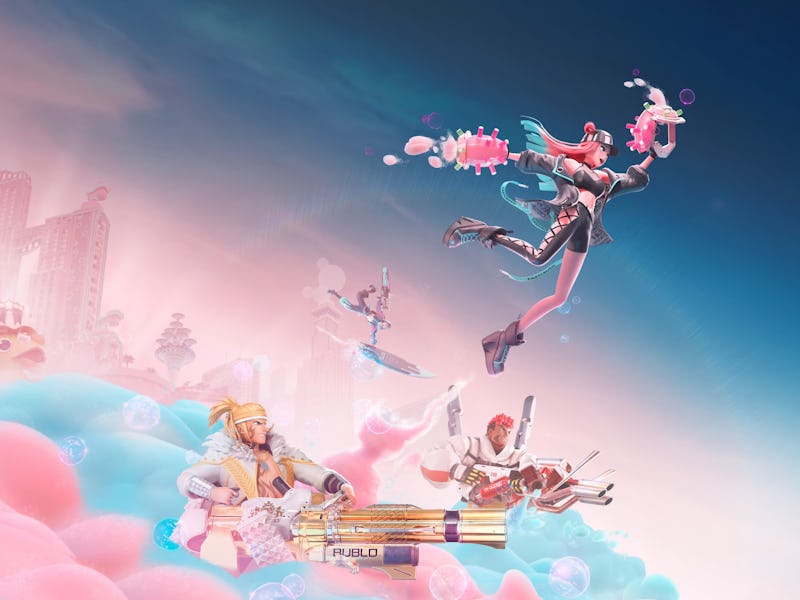Square Enix Kicks Off 2024 With an Extremely Avoidable Controversy
A sad day for the Foamies.

Foamstars has had an interesting trajectory for a game that’s not even out yet. When it was first revealed, its resemblance to Nintendo’s Splatoon (and the name Foamstars) made it a bit of an instant punchline. But once hands-on previews began, consensus seemed to form around it being surprisingly fun. Now, just weeks before launch, Foamstars wades into one of the most controversial subjects in gaming after publisher Square Enix revealed some of its art was made with generative AI.
At a recent press event, Foamstars producer Kosuke Okatani told VGC, “0.01 percent or even less” of the game’s content was generated by AI.
Inverse reached out to Square Enix for comment but did not receive an immediate reply.
Foamstars has been a divisive title since its announcement.
“All of the core elements in Foamstars — the core gameplay and the things that make the game enjoyable — those are all made by hand,” Okatani said. “However, we did want to experiment with AI as well.”
The fact that a game published by Square Enix is launching with AI art isn’t entirely surprising. On January 1, Square Enix president Takashi Kiryu wrote in a statement on the company’s plans for 2024, “We also intend to be aggressive in applying AI and other cutting-edge technologies to both our content development and our publishing functions.”
The surprising part is that it’s happening so soon.
“In the short term, our goal will be to enhance our development productivity and achieve greater sophistication in our marketing efforts,” Kiryu said in the same statement. “In the longer term, we hope to leverage those technologies to create new forms of content for consumers.”
Only a small fraction of Foamstars’ art is AI-generated, according to Square Enix.
The implication there seemed to be that Square Enix would test the waters in its production pipeline before the products of AI made their way into games. But as Okatani’s statement shows, AI generations are already on the table in Square Enix’s released games, even if they only make up a tiny fraction of a game’s total content.
A Square Enix spokesperson later expanded on Okatani’s statement, telling VGC, “We experimented with Midjourney using simple prompts to produce abstract images. We loved what was created and used them as the final album covers players will see in the game.”
The specific naming of Midjourney is especially interesting, as that company is currently being sued by a group of visual artists. “We’ve filed a lawsuit challenging AI image generators for using artists’ work without consent, credit, or compensation,” a statement from the group reads.
Foamstars could be a hint of what’s to come from Square Enix’s AI endeavors.
For critics, the proportion of the game’s content that’s AI-generated seems to be beside the point. In the suit against Midjourney and among common sentiments expressed by artists, the problem is that artists’ work can be used to train AI without their knowledge and without them ever receiving compensation. That’s true whether an entire game or just a tiny fraction of it was made with generative AI.
While the specific technologies involved are different, the same issues are at play in the ongoing dispute over AI-generated voices. Voice actors expressed dismay last year when Microsoft partnered with a firm that uses artificial intelligence to create NPCs. Many were taken aback again when the SAG-AFTRA union representing them also announced a deal with Replica Studios to create AI replicas of voice actors, though that deal also includes protections for actors including fair payment and requiring an actor’s approval for each project made with their voice.
Regardless of Foamstars’ specific implementation, it represents a further step toward normalizing generative AI in video games, just like the success of The Finals, which uses AI-generated voices. Using this technology to generate small pieces of art isn’t itself an existential threat — it’s not even unprecedented as 2022’s High on Life did the same thing. But combined with Square Enix’s stated plans to increase the use of AI in the future, it does look like the tip of an iceberg that could prove very dangerous for artists of all kinds in the games industry.
This article was originally published on